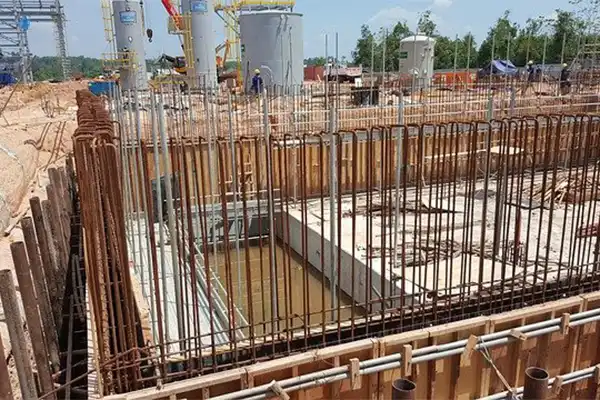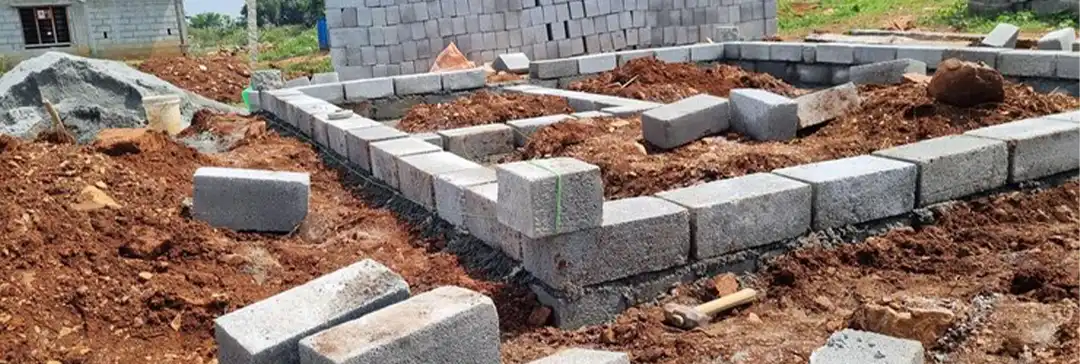A foundation is a structure that helps to support a building and transfers its weight to the earth. It acts as the stabilising anchor to keep things from settling or collapsing. Additionally, the foundation depends on the soil, climate, and general structure design.
India has a vast range of soil types, from sandy ground in some areas to clayey soil in others. When determining the best foundation, one should consider elements like earthquake-prone locations. It’s crucial to remember that in earthquake-prone areas, a thorough seismic analysis and design, a subset of structural analysis that calculates how a building or nonbuilding structure will respond to an earthquake, should be carried out by qualified structural engineers to make sure the foundation type selected satisfies the site’s unique requirements and local building codes. A well-designed and sufficiently sturdy foundation is required for long-lasting, secure homes in India.
Types of Foundations
In India, two types of foundations are used in construction, and the choice of the type of foundation depends on the soil type and other factors, such as building requirements and local regulations. They are
- Shallow Foundation
- Deep Foundation
In this blog, Brick&Bolt gives you detailed information about deep foundations, their types, advantages, and disadvantages of deep foundations.
What is a Deep Foundation?
Deep foundations are the type of foundations that transmit the load of the structure further down the earth in comparison to shallow foundations. This foundation’s depth-to-width ratio is usually more than 4 to 5, meaning the foundation is submerged deeper than its horizontal dimensions. This design factor is frequently used by deep foundations to improve their overall performance and load-bearing capacity. These foundations are used when the project requires support at significant depths or when shallow foundations are not feasible because of insufficient soil strength.

Types of Deep Foundations
There are five types of deep foundations normally used in home construction. They include
- Pile Foundations
- Caisson or Well Foundations
- Basement Foundation
- Buoyancy Raft
- Shaft Foundations
Pile Foundations:
Pile foundations are a form of deep foundation involving vertical columns or piles, either driven, drilled, or cast into the ground. These piles transfer the loads of a structure to deeper, more stable layers of soil or bedrock. Pile foundations are vital in deep foundations, adapting to different soil types and ensuring stability in varied environmental conditions. Their suitability in India relies on soil type, climate conditions, and specific construction project requirements. Professional engineering assessments are imperative for determining the most appropriate type of pile foundation for houses.
Caisson or Well Foundations:
Well foundations are structural elements that support massive constructions like piers and bridges. They are usually cylindrical. These foundations are immersed underwater during construction to provide stability and support in difficult situations. When building in India’s difficult terrain and climate, caisson foundations provide a solid option, particularly in regions with elevated water tables and soil erosion. The environmental problems unique to each site determine their acceptability, so expert technical evaluations are necessary for the best possible implementation.
Basement Foundations:
A house or other construction site situated with one or more floors below ground level is structured by a basement foundation. All types of foundations, except basement foundations, are partially hidden. The ability to build a “finished” basement, which can serve as a regular room or multipurpose space beneath the main building, is a special feature of a basement foundation.
Buoyancy Rafts:
A foundation design that considers the principle of buoyancy effects is the buoyancy raft foundation. Because of this, the foundation’s total and differential settlements are reduced by lowering the resulting net weight on the soil.
Buoyancy rafts are built by constructing a hollow foundation structure with a specific depth after excavating to soil where the weight of the removed soil equals or is slightly less than the combined weight of the substructure and superstructure. Compensated foundations are an alternative name for buoyancy raft bases.
Shaft Foundations:
Shaft foundations, also known as drilled piers, are a versatile building component that is used extensively throughout the world. In its most basic form, a drilled shaft foundation is built by boring a cylindrical hole, inserting a reinforcement cage, and then filling the borehole with concrete. When drilling and other supporting arrangements are available at the site, shaft diameters up to 6.0 m and depths exceeding 76.0 m are feasible.
Advantages of Deep Foundations
Deep foundations offer several advantages in construction, mainly when dealing with challenging soil conditions or heavy structural loads.
Here are some of the key benefits of deep foundations:
Load Bearing Capacity: Deep foundations transfer loads from a structure to deeper, more competent soil or bedrock. This is especially helpful in weak or unstable soils when the weight of the building cannot be supported.
Stability in Weak Soils: Deep foundations provide stability and integrity of the structure by reducing weak or compressible soils to more stable layers. This is essential to avoid settlement and guarantee the long-term stability of structures.
Mitigation of Settlement: In regions with expansive or compressible soils, settling problems can be a major worry. Deep foundations assist in minimising these problems. By reaching stable soil layers or bedrock, deep foundations lower the likelihood of uneven settlement and related structural damage.
Flexibility in Design: Deep foundations offer flexibility in design, allowing engineers to tailor the foundation system to the project’s specific needs. Different types of deep foundations, such as piles or caissons, can be used based on the site’s characteristics and load requirements.
Seismic Resistance: Buildings with deep foundations, especially those extending into bedrock, are more seismically resistant. When there is deeper support, the effects of ground shaking during an earthquake can be lessened.
Resistance to Lateral Forces: Sheet piles and diaphragm walls are deep foundations that resist lateral forces. This is especially important for constructions near slopes or bodies of water, where lateral soil movement is common.
Disadvantages of Deep Foundations
While deep foundations are essential in many construction projects to provide stability and support in challenging soil conditions, they also come with disadvantages.
Here are some of the main drawbacks associated with deep foundations:
Cost: Deep foundations tend to be more expensive than shallow ones due to the additional materials, labour, and equipment required for installation. The cost of excavation, drilling, or driving piles can significantly increase the overall project expenses.
Time-Consuming Installation: Deep foundation placement is typically a time-consuming procedure. Project timelines are impacted when piles are driven or drilled into the earth more slowly than shallow foundations.
Noise and Vibration: Significant noise and vibration can be produced during the installation of deep foundations, mainly driven piles. This might interfere with sensitive equipment, disrupt surrounding structures, and possibly result in complaints from adjacent residents.
Risk of Subsurface Unknowns: There may be occasions when it is impossible to fully know or forecast the underlying conditions beneath the construction site. Unexpected disturbances in the soil’s composition or the presence of boulders complicate the installation process and raise costs.
Maintenance Challenges: Accessing and maintaining deep foundations can be challenging. If issues arise, repairs or modifications may require specialised equipment and expertise, adding to the overall maintenance costs.
Conclusion
Deep foundations are essential to civil engineering since they offer a strong option for buildings in difficult soil conditions. Even though they provide the necessary stability and load-bearing capacity, it’s critical to recognise the drawbacks that come with them. Engineers must carefully weigh the advantages of improved structural support against the increased expense, labour-intensive installation process, possible environmental impact, and requirement for specialised maintenance.
Whether in piles, caissons, or another structure, deep foundations are selected by carefully considering site-specific factors, such as soil properties, groundwater levels, and project specifications. Despite their challenges, deep foundation systems are extremely versatile and can be used for various construction projects, including high-rise buildings, bridges, and other vital infrastructure.

